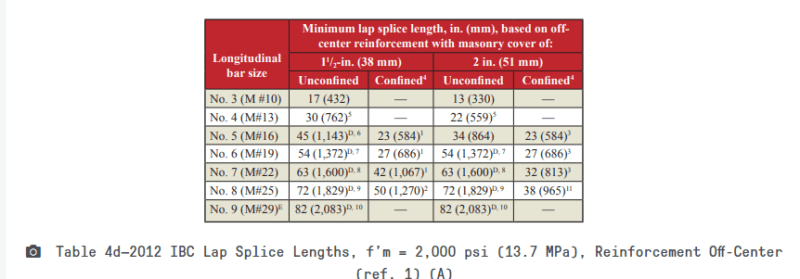I have a 12" CMU wall that I am looking to calculate the required lap length for the reinforcing. The wall is somewhat heavily reinforced as it is a shear wall in a long skinny building. Currently I am using 2-#6 bars per cell with a cover of 2 1/2" to the outside face of the masonry wall. f'm = 2,000 psi, building code is IBC 2015.
I am calculating a required lap length of 90.7 (db)^2.... or 51 inches using equation 8-12 form ACI 530. I have run the walls design through some software I have from NCMA and they are giving me some obtuse lap length of 84 inches.
Am I calculating this lap length correctly?
I understand that we can switch materials out and such... but at this point this is where we are, so I am just looking for an answer to my question, not responses asking why I don't use material XXX vs CMU. It's a non starter at this point.
I am calculating a required lap length of 90.7 (db)^2.... or 51 inches using equation 8-12 form ACI 530. I have run the walls design through some software I have from NCMA and they are giving me some obtuse lap length of 84 inches.
Am I calculating this lap length correctly?
I understand that we can switch materials out and such... but at this point this is where we are, so I am just looking for an answer to my question, not responses asking why I don't use material XXX vs CMU. It's a non starter at this point.

